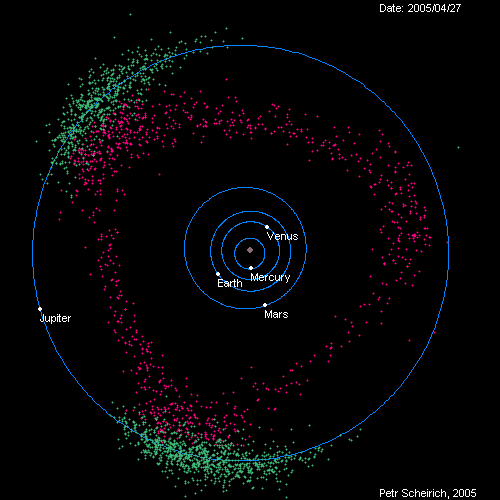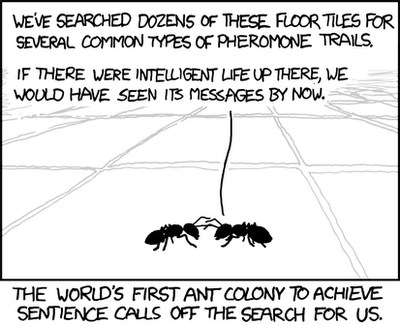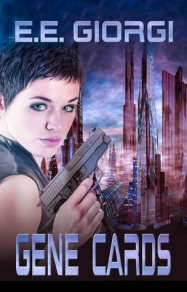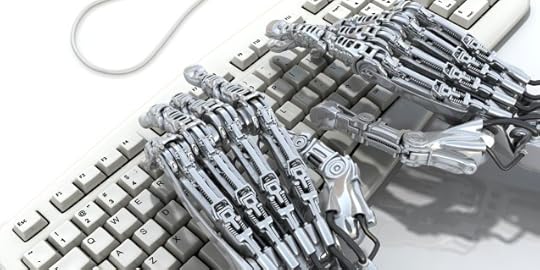Peter Cawdron's Blog, page 12
March 14, 2015
Jupiter
Jupiter is a colossus among the planets in our solar system.
Everything about Jupiter is extreme. The Great Red Spot is an anticyclonic storm three times the size of Earth and has been raging for at least 350 years.

Earth fits into the Great Red Spot some three times
With a magnetic field 20,000 times stronger than that of Earth, the radiation surrounding the planet is 1000xs the lethal dose for a human, damaging even heavily shielded space probes.
Jupiter is so big you could fit all the other planets inside it and is far closer to becoming a star than it is to being a planet like Earth.
Stars are formed because gravity causes hydrogen and helium to undergo pressure-induced fusion. Earth is roughly a million times smaller than the Sun, but Jupiter is only a thousand times smaller. And yet, if Jupiter was just 20xs bigger it would be considered a brown dwarf star. At 80-100x bigger, Jupiter would undergo fusion and shine as a red dwarf with enough light to allow you to read at night. As it is, Jupiter already glows when viewed in infrared light!

Jupiter puts the giant in gas giants
Jupiter is a vacuum cleaner, sucking up debris.
Jupiter shields the inner planets from asteroids, shepherding asteroids and keeping them in stable orbits around the Sun.
Without Jupiter, asteroid impacts like those that wiped out the dinosaurs could be so frequent complex life would never have evolved here on Earth.

Jupiter’s influence on asteroids
At first, this animation might look a little confusing and counterintuitive, but it’s a fantastic example of how gravity shapes space.
Notice the different orbital speeds. Close to the Sun, Mercury is like a race car. Venus is slightly slower, then Earth, then Mars, then the Hilda family of asteroids (in magenta) and the Greeks (in front of Jupiter) and the Trojans (trailing Jupiter).
Space isn’t flat. Picture the animation above occurring in the fundraising coin well below and you’ll get a good mind-picture of how gravity works.

Space is like a coin well, only there’s no friction so the coins keep going around and around and around
Imagine Jupiter as a bowling ball rolling around a trampoline. Anything that gets too close is going to get sucked in. But what about objects that aren’t too close and are also in motion on our trampoline? How will they behave? Remember, in space there’s no such thing as being stationary. Everything’s in motion, and so asteroids find themselves in equilibrium with Jupiter and the Sun and appear to “sit” in the Lagrange points (in green) on either side of Jupiter.
If we take another perspective, imagining we’re in motion directly above Jupiter as it orbits the sun, then the massive planet appears stationary and we get an idea of how these asteroids have stabilized in their orbits.
The triangular shape of the Hilda family of asteroids is an illusion. Each individual asteroid is in a highly elliptical orbit, but there’s so many of them crisscrossing each other they give the appearance of a triangle relative to the Lagrange points.

Without Jupiter the inner solar system would be chaotic
The (green) Greek and Trojan asteroids on either side of Jupiter are in motion around the Sun at roughly the same rate as Jupiter and are held in these spots by the way gravity balances between Jupiter and the Sun (which are roughly equidistant from these clouds of asteroids).
Being in a lower, closer and faster orbit to the Sun, the Hilda asteroids “bounce” between these Lagrange points and the point directly opposite Jupiter.

Topographical maps help us imagine three dimensions in two
If we compare Lagrange points to topographical maps, “Able Hill” and “Baker Hill” would be our two (green) Lagrange points with the Greek and Trojan asteroids sitting on the hilltops. Jupiter would be in the valley in-between, while the Sun would be down at sea level.
Jupiter’s phenomenal size gives it a massive influence over the distribution of asteroids in our solar system, protecting Earth for billions of years and allowing life to flourish.

Picture credit:NASA. The moon Io orbits high above the clouds of Jupiter
Looking up into the night sky, Jupiter appears insignificant, little more than a tiny dot in the darkness, but it has played a dominant role in shaping our solar system and may be the key to why life was able to avoid being peppered by asteroids. Without Jupiter, Earth might be a planet full of microbes and nothing else.


March 12, 2015
You’re invited!
It’s time to party!
I’m excited to announce The A.I. Chronicles comes out on Friday, March 13th. If you enjoy independent science fiction, stop by and join the Facebook party (Friday night in the US, Saturday morning in Australia)
Promoting novels is a bit like shouting at a rock concert. You can try, but you’re not going to be heard. The only real way to market a book as an independent author is to engage with readers. Word of mouth trumps all the supposed “best seller” tricks.
If you’ve read any of the books in this series, please leave a review on Amazon. It’ll only take a minute and you’ll help dozens of independent authors.
A.I Chronicles
Telepath Chronicles
Alien Chronicles
Robot Chronicles
You’ll never see these books advertised in Times Square or in USA Today, there’s just no way an independently produced book can snag those spots. The only marketing we have is you and your enthusiasm for speculative science fiction.
So come along and join the party. I’ll bring the virtual pizza and beer :)
Thanks again for supporting independent scifi.


February 10, 2015
Darwin Day Comic Strip: Darwin & the Galapagos Islands
Darwin’s life in comic overview
 Originally posted on The Dispersal of Darwin:
Originally posted on The Dispersal of Darwin:
Via Exodus:
[image error]


January 3, 2015
Cancer: bad luck or bad journalism?
Recently, there’s been a lot of press about cancer being caused by bad luck, but is it?
There’s two questions we should consider. How accurate is the science? And then how accurately is the science being reported?
How accurate is the science?
Science is built around transparency and repeatability, with scientific papers being subject to rigorous peer review to examine their method, results and conclusions.
In this case, the scientists involved have picked up on a legitimate correlation between the risk of cancer arising in a particular organ and the number of cell divisions that occur in that organ. Lots of cell division = higher risk. It’s an interesting insight, but it doesn’t mean cancer is the result of bad luck.
How accurately is the science being reported?
As with so much that goes on in the media, most of the articles I’ve seen on this topic have been nothing more than a rehash of other articles without too much thought or analysis.
All too often, “automatic content creation” replaces actual journalism. Whenever you see roughly the same information repeated mindlessly, you’re probably looking at a content aggregator rather than actual human content.
The great irony of the internet age is content is growing at an exponential rate but quality is falling away. In the 1900s, the consummate knowledge of mankind doubled every century, prior to that, such doubling is estimated to have occurred only once a millenia. By the end of World War II, our collective pool of knowledge was doubling every 25 years. Now, the amount of information in the world doubles every year.
The problem we face going forward is identifying trustworthy, reliable knowledge in the sea of verbiage. Automatic content creation is a plague on the internet. Best solution? Check the sources an article is based upon. No source = no value.
In this case, the science isn’t being accurately reported as the conclusion that cancer is the result of bad luck is not the conclusion of the study.
Yes, organs with lots of cell division carry a higher risk of developing cancer, but it’s a broad, general observation. Lifestyle (epigenetics) has a huge impact, as does genetics. Look closely at the published graph showing the results of this study. There’s a big clue in that one of these cancers is listed twice.
Remember, this graph is logarithmic, meaning although the values on the axis look evenly spaced, they’re not. Each marked value is exponentially further away from the last value. 10^5 is a hundred thousand while 10^7 is ten million, and 10^9 is a billion, etc.
Now, look at lung cancer. There are two values, one for smokers the other for non-smokers. They’re not the same. Why? Because lifestyle choices make a MASSIVE difference, on the order of 18 times more difference when you do the math!
The cancer risk is 18 times higher in smokers than non-smokers. Since roughly 18 percent of the adult US population are smokers, this suggests that for lung cancer, about 75 percent of the risk is due to smoking — Guardian
No other cancer in this study has been broken down by known drivers.
The incidence of melanoma (skin cancer) is known to be directly linked to sun exposure damaging DNA. Split out those that developed melanoma after years of exposure to the sun against those that developed melanoma even though they protected themselves with sunscreen, hats, etc, and you’ll probably get a very similar result to the smoking/non-smoking difference. Also, genetics play a huge role in melanoma, with light skinned/fair haired people being far more susceptible to this cancer.
Another stand out is HPV as this is a cancer we know is caused by a virus, and we’ve developed a vaccine for it, yet it also ostensibly follows the pattern of cell division = higher risk. Clearly, there’s more research to be done and better categorizations to be made to take into account these other contributing factors.
Cancer is an astonishingly complex disease. There’s no silver bullet. There’s no simple answers, like “It’s all just bad luck.” But there is an abundance of wonderful research being done on how to prevent and how to treat cancer.
An ounce of prevention is worth a pound of cure — Benjamin Franklin
Eat healthy meals. Exercise regularly. Avoid exposure to known carcinogens. Protect yourself from the sun, etc. None of that advice has changed with this study.
Don’t leave cancer to dumb, bad luck.

December 16, 2014
My Top 10 (actually 18) Books of 2014
Top 10 Books of 2014 as chosen by independent science fiction writer Will Swardstrom
 Originally posted on Will Swardstrom - Author:
Originally posted on Will Swardstrom - Author:
It’s December, so that can only mean one thing – end of the year Top 10 lists! I did my favorite reads of 2013 last year, so now this can be a yearly thing. Just like last year, most of the books I read over the last 365 days or so were independently-published. Just like last year, I really believe we are in the midst of a publishing renaissance thanks to the new digital publishing tools at our disposal.
Personally, I did manage to get my second novel published, but everything else I published ended up being short stories (a couple will even be showing up in the first couple weeks of 2015). Due a lot of family situations, including a major addition to my family in August, writing just wasn’t as much of a priority during a few stretches. I can say I was able to get about 1/3…
View original 3,184 more words

December 9, 2014
What will First Contact be like?
Is there life in outer space?
Although there’s plenty of conjecture in the media and a host of imaginative science fiction stories on this subject, we already know the answer to this question.

Picture credit: Wallpapers
Yes, there is life in outer space!
There’s no uncertainty, no doubt, no question at all. Life exists in outer space. Earth itself is definitive proof that life can thrive in the harsh environment of space.
At first glance, such an answer might seem disingenuous, as what people really mean when they ask, “Is there life in outer space?” is … “Is there any other life?” but this is a genuine answer. Our universe is a harsh, hostile environment, and yet life has flourished with astonishing diversity on at least one planet—Earth.
The answer to the question, “Is there any other life in outer space?” is “We don’t know, but we have no reason to think there isn’t.”
In the 16th century, Nicolaus Copernicus first established that the Earth revolves around the sun. The single biggest hurdle he faced in promoting his heliocentric theory was that everyone assumed the Earth was special. Earth wasn’t “just another planet” like Mars or Venus. Earth was the center of creation! Copernicus proved otherwise.

Picture credit: ArtsElectronic
Even now, five hundred years later, people still struggle with Earthism (if I may be allowed to coin such a phrase) assuming Earth is somehow special and unique in the heavens. The reality is, Earth is a rather small planet in orbit around an unassuming star in a modestly sized, nondescript galaxy.
Everything we’ve learned about astronomy suggests there are a ridiculously large number of similar, Earth-like planets out there, perhaps as many as 40 billion in our own galaxy!
There are at least two hundred billion galaxies in the visible universe, each with hundreds of billions of stars. Each of these stars can potentially host dozens of planets.
Earth is as unique as a snowflake, but so is Mars, Venus, Jupiter and Saturn. Contrary to popular belief, snowflakes are somewhat identical when they form and, as wonderfully varied as they are once they reach the ground, they’re not entirely unique.

Picture credit: True story behind the snowflake
Earth is astonishing and beautiful, but it is no more or less important or unique than any other planet. Consider the other planets in our solar system, Mercury, Venus, Mars, Saturn, Jupiter and the rest. They may lack complex life but they’re just as extraordinary as Earth, and there’s a distinct possibility that the moons of Saturn and Jupiter could harbor microbial life!
In the 1950s, Enrico Fermi looked out at the stars and posed the question, “Where is everybody?” Fermi had done the math and realized given the size of our galaxy and how long it has been around, we should see the Milky Way teeming with life.
Fermi’s Paradox has become a mainstay of astronomy ever since, with scientists trying to understand why the heavens are silent, and yet the answer may be surprisingly simple.

Picture credit: xkcd – The Search
Seth Shostak, in his non-fiction book, Confessions of an Alien Hunter, points out how astonishingly difficult and time consuming it is to search through space.
Seth gives the analogy of someone sitting next to a haystack, sifting through a thimble full of hay looking for a needle to highlight how little we have accomplished in our search for extraterrestrial intelligence. Only this particular field we’re sitting in has at least two hundred billion other haystacks!

Picture credit: Finding needles takes time, perseverance and patience
Space is unimaginably big. The average star seen with the naked eye is roughly a hundred light years away, and yet the distribution of stars that make up our galaxy spans a hundred thousand light years!
On the darkest night, we see only a tiny fraction of the stars in our own galaxy, something like 0.000005% of the stars out there.

Picture credit: Neil deGrasse Tyson
Look out at the stars tonight and the chances are the starlight falling on your eyes first radiated into space before you were born. That light has been racing through space over the course of your entire life, only to arrive now and register in your eyes for a fraction of a second.
When you look at the numbers, First Contact is a question of when, not if, and yet First Contact won’t be anything like the movies.
Stephen Hawking is concerned about First Contact, noting that, historically, First Contact with an advanced civilization never ended well for the original inhabitants. American Indians, Aztecs and the Australian Aborigines all suffered at the hands of the more technologically advanced colonial Europeans, but First Contact with an extra-terrestrial intelligence will be quite different.
Rather than working against us, First Contact is going to be extremely one sided in our favor, and the reason is simple—we will detect ET long before ET detects us.
Remember, looking into space is akin to looking back in time.
If we detect an alien civilization at the modest distance of 3,000 light years away then we will see that civilization as it existed 3,000 years ago. Should they happen to be looking in our direction, they’ll “see” us as we were in 1000 BC—King David ruled in Israel, the Assyrian empire dominated the Middle East, Rome wasn’t founded for another three hundred years.
ET would “see” a technologically silent planet with a curious atmosphere that they might consider a candidate for life, but they’ll have no direct evidence for intelligent life.
Even if our extraterrestrial neighbors can travel faster than the speed of light and can reach Earth in a relatively short period of time, they would still have no way of knowing there was civilized life on Earth for thousands of years to come. In short, we can see them, but they can’t see us.
In this way, emerging celestial societies, such as Earth, have an advantage over more technologically advanced societies in that we can eavesdrop. We can remain incognito as we learn about ET.

Picture credit: Tiny Humanity. Yep, that blue dot is as far as our radio signals have reached into space
If we detect an alien civilization anywhere beyond that tiny blue dot, they’re not going to know about us for a very looooong time.
So what is First Contact likely to be?
Contact is somewhat of a misnomer. First Detection is more appropriate.
If we look at the kinds of signals broadcast by humans, some of the strongest signals come from “dumb” technology, things like weather radar or navigation radar at airports. There’s not too much that could be inferred from detecting such a signal from an alien civilization other than that the signal wasn’t produced naturally. If we picked up their equivalent, we’d know they were there, but it would take years to glean more than that.
More interesting signals, such as radio and television, are designed for local reception. Although such signals leak into space, they weaken according to the inverse square of the distance they reach—double the distance, quarter the strength, etc. As they’re not intended to span star systems, they’re going to be absurdly difficult to detect as they’ll be so faint they fade into the background noise.
ET may use some kind of point-to-point solution for communicating between planets or stars, something like a laser. Being effective over large distances invariably means there’s less leakage, less opportunity for us to eavesdrop. We would miss something like this entirely.
One hallmark of civilization is the consumption of power. Converting energy into usable power is notoriously difficult to do efficiently. Invariably, there’s always some kind of leakage. Engines are noisy, they get hot, etc, so when looking at the heavens we look for the telltale signs of industry. We may very well detect the heat signature of an advanced alien civilization before detecting their radio waves.

Picture credit: HALO – A Dyson sphere around a star would give off infrared radiation we could detect
Another possibility is a deliberate broadcast. In this scenario, ET recognizes the difficulty of interstellar travel and broadcasts his intentions either via radio waves (cheap to send) or by sending out Von Neumann probes (such as the monolith in 2001: A Space Odyssey). In essence, this is the equivalent of the time capsules we buried in grade school, leaving something for future generations to examine.
More than likely, though, First Contact/Detection will be accidental on ET’s part and not a deliberate message, and that will limit what we can learn from them.
First Contact is going to be a long, slow process, but it will change our outlook on life and the universe just as radically as the telescope Galileo first pointed at Jupiter.
When it comes to First Contact, we’re going to have to be patient.
Peter Cawdron is the international bestselling author of such speculative First Contact novels as ANOMALY, XENOPHOBIA and MY SWEET SATAN.

November 26, 2014
Scientist Fiction
Recently, while working on the Telepath Chronicles, I got to meet Elena Giorgi, a native of the virtual land of Facebook.
Elena is a scientist writing science fiction, specializing in thrillers, and she’s got quite a yarn to spin.

Not only is Elena an author, she’s a remarkable photographer
Here’s my interview with Elena.
Writing is an arduous task, a labour of love. What inspired you to start writing science fiction?
That’s an interesting question, because in fact, I grew up reading the classics and a lot of literary fiction, and indeed that’s all I wrote for the longest time. I studied theoretical math in college and graduate school, and as much as I love rigor and logic, I soon grew tired of all the abstraction with no immediate application. Quoting from a guest blog I did for the STEM Women website
“Pure math is beautiful and perfect. There’s Banach spaces, and then Hilbert spaces, and then Banach spaces of Hilbert spaces, and Hilberts of Banachs of Hilberts… It’s like getting lost in one of Dr. Seuss’s pictures. Oh, the thinks you can think…Yes you can, but… do you want to?”
I switched to genetics in 2004 and never looked back. That’s when I started also envisioning all these fantastic science fiction scenarios because truly, if you think human imagination has no limit, wait until you see what Mother Nature came up with through genetics and epigenetics. It’s mesmerizing! You think vampires are cool? Wait until you learn about epigenetic chimeras! We have alien colonies right in our body, millions of aliens who can actually control how fat and/or lean we are by expressing (or not) certain genes in our guts.
So, in a nutshell, that’s how I started writing science fiction: because I fell in love with molecular biology and genetics. :-)
As a scientist, can you tell us a little about your work on developing a vaccine for HIV?
 My mentor, Bette Korber, designed a couple of vaccine constructs a few years ago, before I started working in her group. The problem with HIV is that the virus mutates so rapidly that the immune system can’t keep up with it. Think of influenza, for example: it mutates fast, too, but because within one season every infected person more or less shares the same virus, we can still vaccinate people with a different strain every year. Well, with HIV, every person has a different virus. Imagine that: with over 30 million people currently living with HIV/Aids, how are we going find a vaccine that can protect from that many viruses?
My mentor, Bette Korber, designed a couple of vaccine constructs a few years ago, before I started working in her group. The problem with HIV is that the virus mutates so rapidly that the immune system can’t keep up with it. Think of influenza, for example: it mutates fast, too, but because within one season every infected person more or less shares the same virus, we can still vaccinate people with a different strain every year. Well, with HIV, every person has a different virus. Imagine that: with over 30 million people currently living with HIV/Aids, how are we going find a vaccine that can protect from that many viruses?
Bette and the other wonderful scientists working in my group came up with some genetic sequences that could summarize all the diversity in the HIV population, so that by vaccinating with a handful of strains you can protect people against millions of circulating variants. The problem with that is that these genetic strains had to be reconstructed in silico, in other words, on a computer. No HIV virus found in nature right now will be able to give you that kind of protection. However, a vaccine created with a computer instead of being found in nature has to overcome many more hurdles before it can go into human trials.
When I came on board we had ongoing experiments on animals, and my role was (still is) to analyze the experimental data and statistically validate the results. The good news is that the results have been great in animal studies, and human trials just started this past October. We are all very excited about this.
Being a scientist by trade, does it bug you when movies like Prometheus take shortcuts and hash the science? (I couldn’t believe they took off their helmets inside an alien tomb!)
 You know, sometimes “knowing too much” can really take away the enjoyment of movies and fiction.
You know, sometimes “knowing too much” can really take away the enjoyment of movies and fiction.
For me, it’s not just the science. I learned a lot of forensics and police procedural when researching for my book Chimeras, so now shows like CSI are totally ridiculous to me.
And indie author to indie author: you wouldn’t believe how many errors I catch in traditionally published books. It drives me up the wall, because these are the same editors who couldn’t believe the science in my books, and then they go off and publish poorly researched (or not researched at all) books.
Can you tell us a little about your latest writing project?
I’m planning and jotting down ideas for a third book in the Track Presius series, a hard-boiled detective thriller where crimes revolve around medical research and genetics. I’m also about 1/3 into the sequel of Gene Cards, which instead is a futuristic thriller featuring Biothreat special agent and Muay Thai fighter Skyler Donohue, her white hat hacker friend Peter Wang, and the extravagant medical examiner Dr. Erasmus Montoya. As if that wasn’t keeping me enough busy, I’m working on a short for Samuel Peralta’s next anthology in the Future Chronicle series, and I’m half way through a YA fantasy novella, which may or may not turn into a serial (we’ll see).
If you could have one of your books turned into a movie, which one would it be and why?
Chimeras, for sure! It’s a hard boiled detective thriller with enough action (but lots of science too!) to make it a fun ride. If I’m allowed a little plug, the audio book just came out, and it is a bit like watching the movie. The narrator did an amazing job! I’ll admit I’m biased, though. ;-)
What do you love most about science fiction?
I love just about everything about science fiction, but if I were to pick one favorite aspect, it would have to be the speculative one. When I read a book, I want something that leaves me pondering, and science fiction has that power because many of the premises are drawn from our every day life and projected into other worlds, or other realities. It’s fun to speculate about our future or envision the possible consequences of our behaviors as a species.
Thanks so much for the opportunity, Peter!
Website/blog: http://chimerasthebooks.blogspot.com/
Facebook: https://www.facebook.com/pages/Chimeras/166368693451952
Twitter: @eegiorgi
Chimeras: http://smarturl.it/chimeras

Seriously, make sure you check out Elena’s books and her magnificent art work
You can find Elena’s writing on Amazon and her amazing photography and artwork is available on sale on SmugMug

November 8, 2014
Interstellar
Christopher Nolan’s latest movie Interstellar is a blockbuster in every sense of the word.
I loved it. Yes, there’s some handwavum (particularly toward the end) and there are gaping unexplained paradoxes and an impossible escape from beyond the event horizon of a black hole, but what a visual feast!
Nolan has to be commended for his vision.
At three hours in length, Interstellar is epic. The breadth of the storytelling is mind boggling.
To be critical and nitpicking of a movie like this is to miss the art. I’ll raise a few points here, but they’re not criticisms, more observations I think you’d enjoy considering.
The portrayal of time dilation is chilling to behold. Sure, the effect is exaggerated to an extreme in the movie, but it’s an amplification, not an error.
There’s a few implausible things, like not observing a planet from orbit before setting down and getting wiped out by tidal waves, but in the 90s, who would have thought the twin towers would be felled by terrorists in hijacked planes? Oh, by the way, we once had tidal waves like that here on Earth.
It has taken billions of years for the Moon to recede to where it is today. Shortly after its formation, the Moon would have been considerably closer and would have caused tides hundreds, perhaps thousands of feet high, meaning life emerged on Earth when it resembled a cosmic washing machine.
For those kind of tides to occur on a planet orbiting a black hole, the planet would need a rotation period of about two hours (making a very short day) but being so close to such a large object, the planet would probably be tidally locked like our moon (which would result in no tides). But it was uber cool!
The ice clouds were another visually cool but physically impossible concept in the movie, with spaceships flying between upside-down mountains.
The portrayal of the accretion disk around the black hole, though, is extremely well done.
Imagine staring at Saturn with its thin, flat rings, only somewhat paradoxically you can see the rings curve both above and below the planet, THAT is what you’re looking at here.
The accretion disk of a black hole is relatively flat and straight, swirling around the equator, but gravitational lensing causes the light from the far side of the black hole to bend up, over and around the hole, giving the appearance of a halo that’s not actually there. It’s a bit like sticking a pole into water and seeing it appear to bend, only the light is being bent by the strength of gravity.
Fly around the equator and the black hole will always look exactly as it does in this shot because there is no halo standing up behind it, that’s an illusion of gravitational lensing. Fly above the poles and look down and you’d see the ring, only the ring would look much closer than it actually is as the lensing would draw it together.
Beautifully done.
Interstellar is well worth the price of admission.
Be sure to see Interstellar on the big screen.
9/10 stars from me.


November 6, 2014
Sci-Fi November – Review: The Telepath Chronicles – An Anthology of Science Fiction
I’m excited to be part of the Telepath Chronicles, an anthology of independent science fiction writers. Here’s a review by Michael Patrick Hicks.
 Originally posted on Michael Patrick Hicks:
Originally posted on Michael Patrick Hicks:
About The Telepath Chronicles
Telepathy. Just a far-fetched bit of science fiction “hocus pocus.” But is it? With today’s giant leaps forward in technology and biotechnology, with people constantly surrounded by sophisticated yet invisible communication networks, and with a rapidly increasing understanding of the brain’s inner workings . . . is it so hard to imagine that we might be able to develop direct mind-to-mind communication?
Or might it not be the case that evolution alone, in the right circumstances—if not on this planet, then on others—could give rise to creatures with telepathic abilities?
This collection of fourteen stories explores the ramifications of a future where telepathy is real. From that first glorious moment of discovery, to the subsequent jealousies and class divisions, to the dangers of weaponization and the blessings of medical miracles, The Telepath Chronicles promises to take you inside the creative minds of some of today’s top…
View original 530 more words


October 10, 2014
Book Review/Author Interview: My Sweet Satan by Peter Cawdron
Here’s a book review and author interview focusing on my latest novel, MY SWEET SATAN
 Originally posted on TJ's New Book Blog:
Originally posted on TJ's New Book Blog:
The crew of the Copernicus are sent to investigate Bestla, one of the remote moons of Saturn. Bestla has always been an oddball, orbiting Saturn in the wrong direction and at a distance of thirty million kilometers, so far away Saturn appears smaller than Earth’s moon in the night sky. Bestla hides a secret. When mapped by an unmanned probe, Bestla awoke and began transmitting a message, only it’s a message no one wants to hear: “I want to live and die for you, Satan.”
Review 5 of 5 Stars
I first encountered Peter Cawdron’s storytelling when I found Anomaly on the free book list one day a couple of years back. What a find that was as he’s one of my favorite new authors that’s come along in the past few years. His work has improved each step of the way from the first book I read…
View original 2,096 more words
















